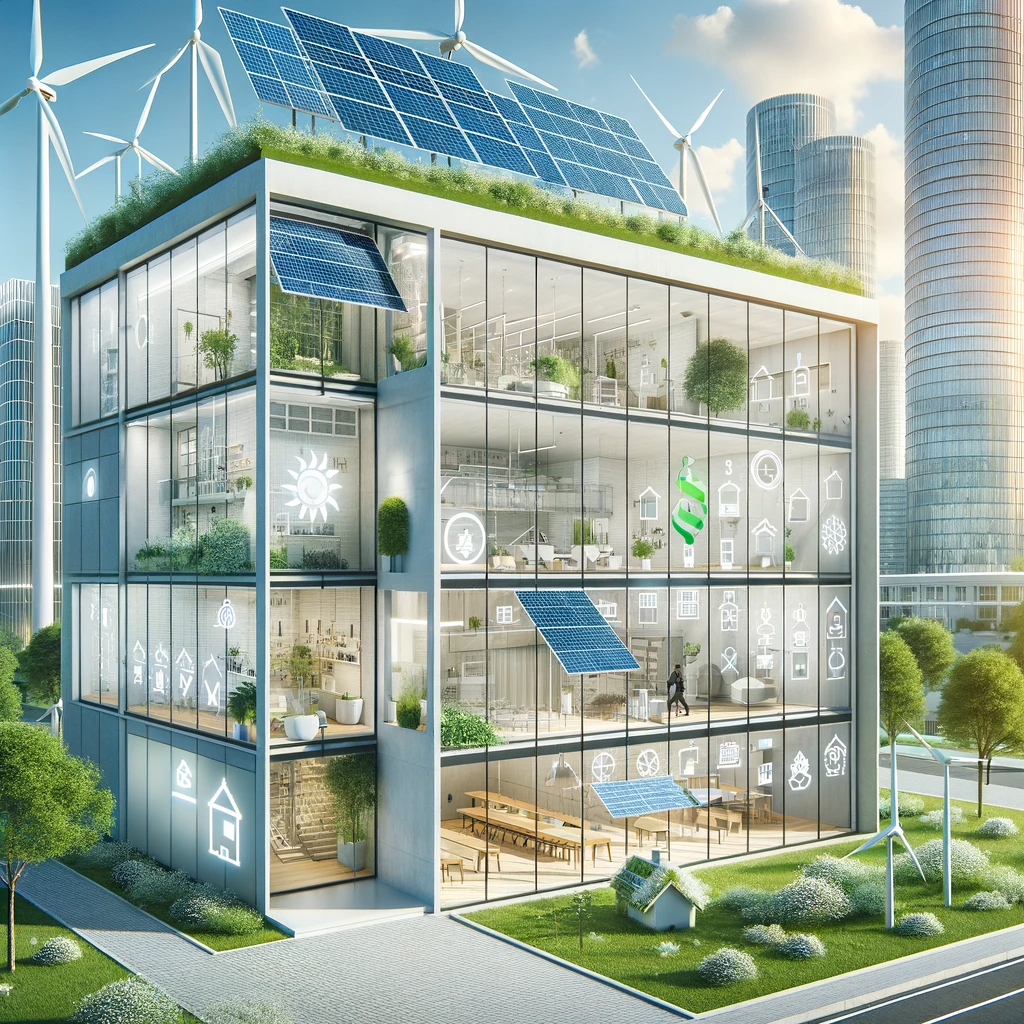Energy Efficiency Strategies for Green Buildings
In an era of growing environmental consciousness and concern over energy consumption, green buildings have emerged as a beacon of hope. These eco-conscious structures not only reduce their carbon footprint but also promise to revolutionize the way we design, construct, and inhabit buildings. This article explores the transformative strategies that can elevate energy efficiency in green buildings, offering a glimpse into the future of sustainable architecture.

The Blueprint for Energy Efficiency in Green Buildings
1. Sustainable Building Design
a. Maximizing Natural Light
Integrating ample natural light reduces the need for artificial lighting, enhancing both energy efficiency and the well-being of building occupants.
b. Green Roofs
Green roofs serve as natural insulators, moderating indoor temperatures and reducing the energy required for heating and cooling.
c. Energy-Efficient Building Materials
Opt for materials that offer superior insulation properties, minimizing energy loss and enhancing overall efficiency.
2. Advanced HVAC Systems
a. Efficient Ventilation
Implementing state-of-the-art ventilation systems ensures optimal air quality while minimizing energy usage.
b. Renewable Energy Sources
Incorporate renewable energy sources such as solar panels to generate clean and sustainable power on-site.
3. Building Energy Management
a. Smart Controls
Deploy energy management systems to monitor and control energy consumption, reducing waste and costs.
b. Water Efficiency
Integrating water-efficient fixtures and systems further reduces energy consumption associated with water heating and distribution.
4. Passive Design Strategies
a. Proper Building Orientation
Orient buildings to maximize natural heating and cooling, reducing the need for mechanical systems.
b. Insulation
Invest in high-quality insulation to maintain a stable indoor temperature and decrease reliance on heating and cooling.
The Benefits of Embracing Energy Efficiency
1. Environmental Impact
Green buildings drastically reduce energy consumption, mitigating their environmental footprint and contributing to global energy conservation efforts.
2. Healthier Living Spaces
Improved air quality and natural lighting enhance the well-being of building occupants, promoting productivity and comfort.
3. Financial Savings
Energy-efficient buildings yield lower utility bills and maintenance costs, translating into significant long-term savings for building owners and occupants.
The Role of Certifications
1. Leadership in Energy and Environmental Design (LEED)
The LEED certification system encourages and rewards energy-efficient and sustainable building practices, setting a high standard for green building.
2. Energy Star
Energy Star certification signifies that a building meets strict energy efficiency criteria, providing confidence to building owners and occupants.
Beyond New Construction: Retrofitting Existing Buildings
Energy efficiency isn’t limited to new construction. Retrofitting existing buildings with energy-efficient features can substantially reduce their energy consumption and environmental impact.
The Future of Green Building
As the global energy crisis looms, green buildings stand as a beacon of hope. By embracing innovative energy efficiency strategies and sustainable design principles, the green construction industry is poised to lead the way towards a more energy-conscious, eco-friendly, and sustainable future.
Conclusion: Building a Greener Tomorrow
Green buildings are not just a trend; they are a necessity in our quest to conserve energy and reduce our carbon footprint. These structures not only benefit the environment but also create healthier and cost-effective spaces for their occupants. By implementing energy efficiency strategies and adhering to green building principles, we can usher in an era where buildings are designed not only for today but for a sustainable, energy-efficient tomorrow. Embrace the power of green building, and together, we can build a greener, more sustainable world.
